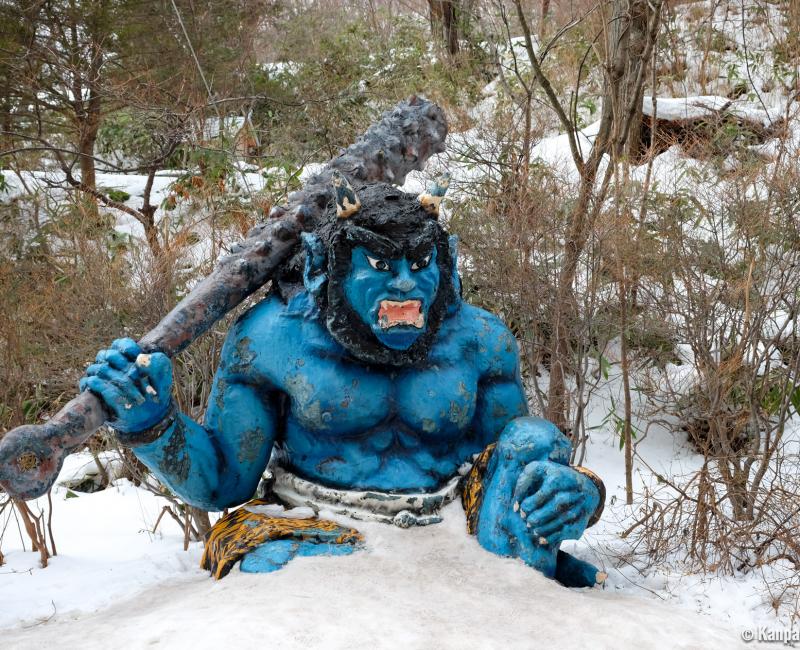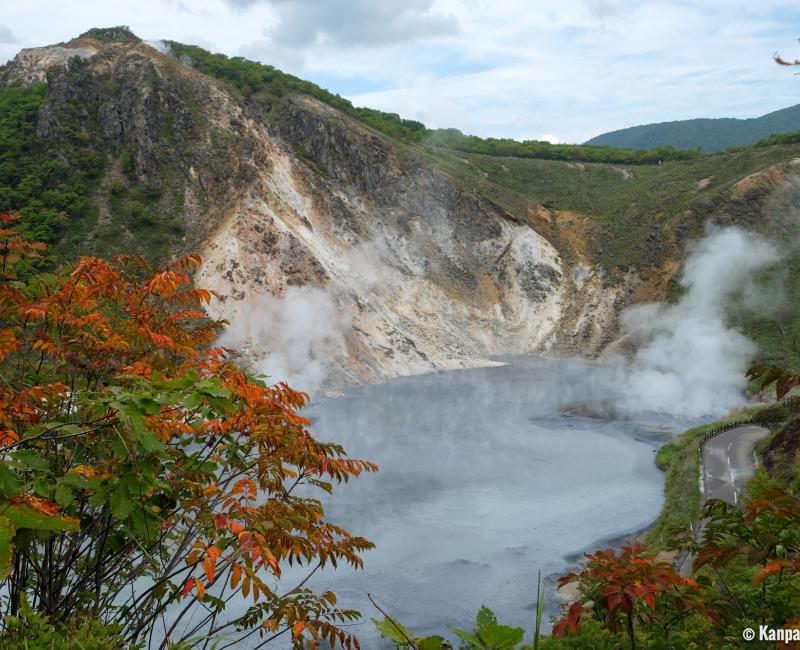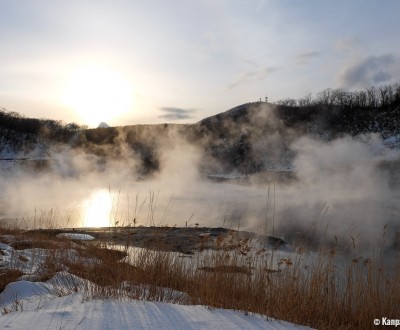Noboribetsu
The relaxing baths of Hell Valley
Noboribetsu is a thermal spa resort located at the foot of Mount Hiyori, a volcano in the southwest of Sapporo on Hokkaido, Japan’s northern island. The place is famous for its numerous hot springs, or onsen, but visitors also appreciate the astounding natural landscapes resulting from the volcanic activity.
Even covered in winter snow, nature boils in Noboribetsu. The heat evaporates in fumaroles or bursts in big bubbles in the spring 🌸 waters. The onsen ♨️ village can boast naturally warm visitors all year long—but before relaxing in a piping hot bath, why not have a nice stroll through hell?
About ten oni demon statues are positioned here and there at street corners or at building entrances to remind visitors that the strength of the elements is to be respected and revered.

Jigokudani (Hell Valley)
Jigokudani, or Hell Valley, is true to its name with its lunar landscape and an atmosphere filled with sulfur odors. It is part of Mount Hiyori, an active volcano 🌋 accessible via a secured, marked trail. Visitors can satisfy their curiosity in observing the fumaroles constantly emitted from the ground. Jigokudani is definitely worth seeing, whether it is carpeted in winter snow or surrounded by the lush greenery of the forest in summer. The thermal resorts draw their hot waters from this place and distribute them to the various neighboring establishments.
It takes another 20 minutes on the walking trail to reach another natural phenomenon: the sulfurous Lake Oyunuma, which was formed by a volcanic eruption. The water temperature on the surface is close to 45°C (113°F) and reaches 130°C (266°F) in the depths. Just across the lake, on the other side of the parking area is Oku no Yu, a smaller, muddier lake with similar characteristics. In the surroundings, you can also see two geysers named Tessen-ike and Taishi Jigoku.
For the last attraction of this walk in the bowels of the earth, just follow Oyunuma River, which, as its name suggests, springs from Lake Oyunuma. In summer and fall 🍁, when the trees’ foliage is at its best, the area is an interesting place for a hike. Because it is a hot spring area, visitors can end a day of hiking by dipping their feet directly in a hot river. Hikers should make sure to bring a towel to dry properly afterwards.
Various places of interest are easily reachable by car 🚙, and nearby parking areas are available. In winter, the roads are closed due to snow and icy conditions. However, the whole visit itself can be made on foot with shoes suitable for cold weather.

Onsen (hot spring resort)
This area’s main attractions are the thermal hot springs. The onsen village, built close to the hot springs, consists of about fifteen hotels. You can access the site by car or by bus from the station seven kilometers away.
Most of the hotels are structured to offer the highest number of rooms in single multistory buildings. The baths are generally on the ground floor, though some also have outdoor baths (the prettiest and the most pleasant ones, by the way). The baths are open to hotel 🏨 customers, as well as single-day visitors. We recommend trying an onsen at the end of the day before returning, as the trains 🚅 run until quite late (until 10 p.m. if you return to Sapporo, for example).
We strongly recommend Dai-ichi Takimotokan hotel for its quality and various services:
- Seven types of baths, from cold to very hot
- A huge indoor bath with a view of Hell Valley and a covered, outdoor bath
- The possibility to have a drink in the onsen area, which is quite rare in Japan
- A thermal facility spread across two floors and equipped with saunas and hammams
Visitors can enjoy Noboribetsu as an unusual well-being break, as it is served by a convenient transportation network from big cities like Sapporo and Hakodate. The picturesque views and the signs written in Japanese only guarantee the change of scenery. The thermal resort is quite popular in summer and less crowded in winter, so visitors might find it interesting to plan a stopover in Noboribetsu between two snow festivals.
Close to the smaller Shiraoi City, Porotokotan Museum is dedicated to the life and customs 🛂 of the Ainu, Hokkaido’s indigenous people. Visitors can stroll through a reconstructed Ainu village. The traditional dance shows revive the ambiance of the Ainu’s customs. However, the use of living animals, such as bears or dogs kept in cages and fed with a hose, might not be the most pleasant way to illustrate Ainu folklore.

